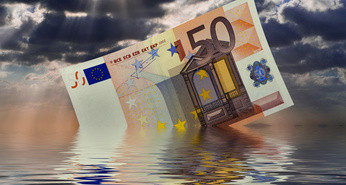Last week began rather quietly for the pound, though there was at least a bit more confidence in the currency again following the ‘no’ vote on Scottish independence last week. Volatility picked up as the week went on. It slipped early on Wednesday to a low of 1.6302, after UK public finance data showed a deterioration in August.
Public sector net borrowing was £10.9 billion in August vs. expectations for £10.3 billion. At the same time, other UK economic data showed that mortgage approvals in August fell to 41,588, against expectations for 42.9k. Not long after the data, GBP/USD soon found its feet and pushed back above 1.64, making two attempts to break through resistance at 1.6410.
Meanwhile the dollar has been stronger, following some fairly hawkish comments from the Fed’s Esther George, who said that she expected wages to pick up and that the US economy was on a 3% trajectory. She also said that interest rates in the US should be above zero by now, but as she’s known for being hawkish, her comments weren’t a complete surprise. New Home Sales data also showed that new home sales in August reached the highest annualised rate since 2008, jumping 18% to 504,000 vs. expectations for 432,000.
By Alex Edwards at UKForex, an international money transfer service
GBP/USD then started to weaken and sell-offs accelerated, despite some fairly hawkish comments by the Bank of England’s Deputy Governor Minouche Shafik, interviewed by the Yorkshire Post on Wednesday. She said, “if wage increases are expected, but productivity is performing well, we can wait for longer; if those wage increases are not accompanied by productivity increases, then I think we will have to move more quickly on rates before inflationary pressures build upâ€. On Thursday, the Bank of England’s Carney said “while there is always uncertainty about the future, you can expect interest rates to begin to increaseâ€.
Finally, the euro. In his testimony on monetary policy before the European Parliament’s Economic and Monetary Committee, ECB President Draghi said little to take markets by surprise. EUR/USD fell to a low of 1.2816. EUR/USD fell through support levels at 1.28 later in the week, and went on to trigger stop loss orders on its way down through the 1.27’s. Draghi was speaking in Lithuania a bit later in the week and his comments didn’t do the single currency any favours either, saying that the central bank is ready to implement additional unconventional policy instruments if the 2% inflation target is threatened.
Next week’s ECB monetary policy decision and accompanying statement will be watched closely, with traders cautious about going too short in EUR ahead of the announcement.
In our latest episode, we talk about Contango vs. Backwardation, Scottish reverberations and key US data:
Download it directly here.



